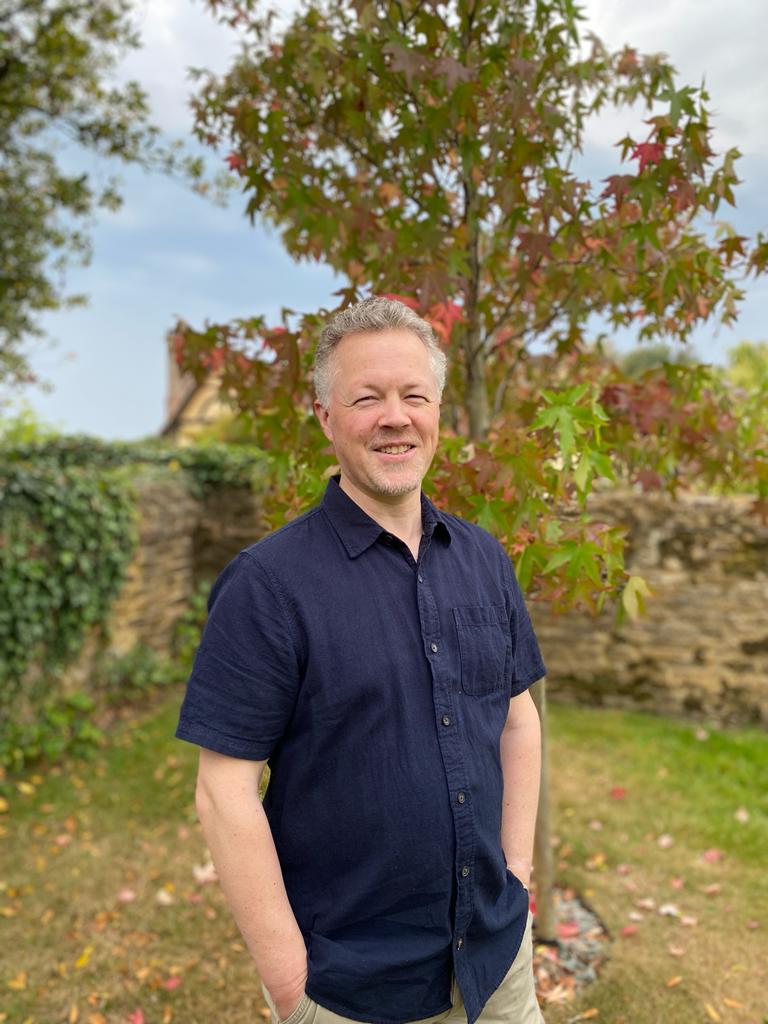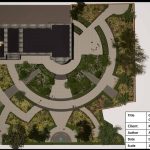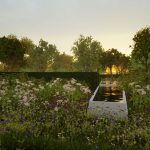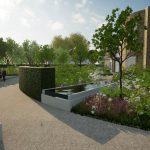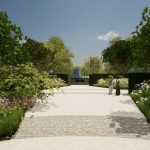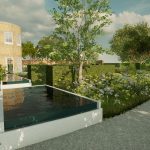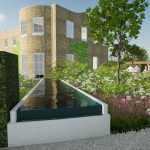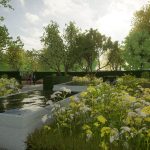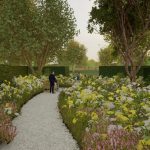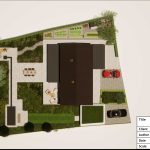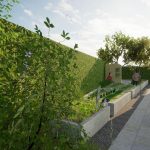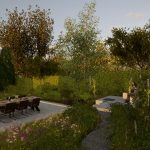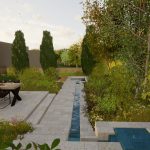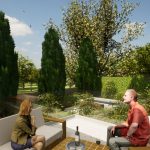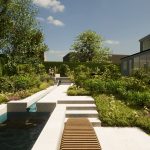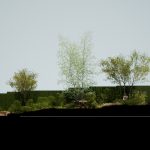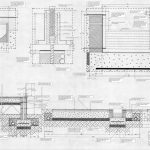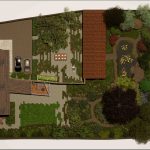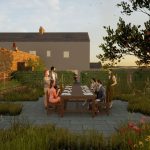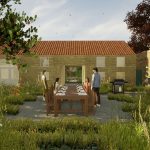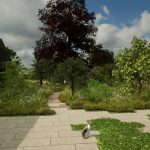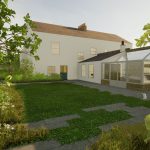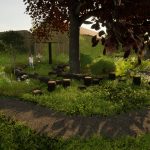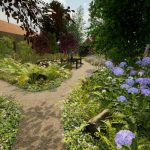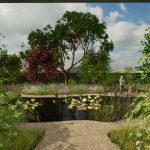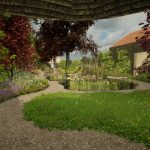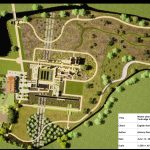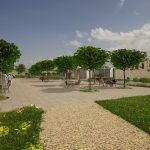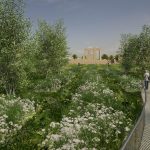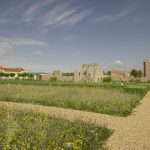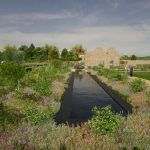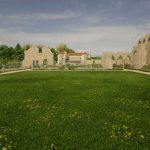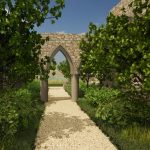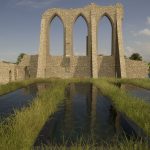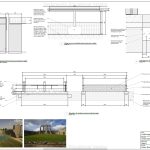Antony Daniels
I have always been passionate about the landscape that we live in, even from an early age growing up on my grandfather’s farm in the middle of Dartmoor. The garden and the wider landscape have played an important part in my private life, and I now have the privilege and the joy of making it part of my working life as well.
I believe our outdoor spaces, both public and private, are essential to our wellbeing and that we should utilise that space to its full potential. I strive to create outdoor environments that provide areas for rest, relaxation, reflection and recreation.
My approach is to fully understand every client’s needs and wants for their outdoor space, and to couple these with the physical attributes of the surrounding landscape and architecture. I aim to unite these elements to create sustainable spaces that are harmonious with the locale and environment.
Biography:
After many years working in the corporate world, I decided to make a change in my career. In my first year I studied the RHS level 2 qualification at Hever Castle. This was followed up with a year studying with the London College of Garden Design, based at Kew gardens, where I graduated with a Diploma in Garden Design.
Prior to my change in career, I worked in financial services (corporate pensions) for over 20 years. During this time, I performed several roles covering design consultancy, proposition and product development, and service provider management. These have given me essential transferrable skills including project management (APM qualified), developing business cases, and most crucially designing and delivering solutions to meet client needs.
Instagram – @sensus.loci
“Creating an environment that inspires and promotes the everyday connections in our lives.”
Cambridge Cottage is one of the most popular and heavily used venues available for public hire at Kew. It is available for daily hire and currently is used mainly for weddings, private parties, corporate events, smaller conferences and lectures. The cottage has a garden that surrounds the property on the Kew Gardens side and opens onto the main gardens, although it maintains a sense of separation.
At its maximum the venue can accommodate 120 people and as often as possible the gardens are used as an important extension of the facility.
The project brief was to develop a design solution for the garden at Cambridge Cottage. The client wanted an inspirational space which is flexible and stimulating in use, but which forms an impressive backdrop to the house and a visual link to the wider gardens of Kew.
The cottage itself has and continues to be a site that connects people, and it is this connectivity that created the main inspiration for the design; eternal union. This is symbolised in many cultures through the interconnectivity of circles.
The main function room is the central point within the design with a series of concentric circles emanating across the garden and connecting the cottage with the gardens of Kew. The design also creates a stronger link with the church on Kew Green, which has been a fundamental part of the history of the site.
“Mid-century Modern influenced design fused with the natural forms inspired by geology.”
The property was built in the 1960s during the Mid-century Modern period. Today the property is owned by a professional couple, which they bought partly due to the views over the woodland of Chesham Bois. The garden encircling the property has changed very little since they bought the property.
The project brief was to develop a design solution for the gardens surrounding the property, both front and rear. Key considerations included accommodating the parking of three cars on a day-to-day basis at the front. The rear garden is a relatively small, sloping space with some established planting but mainly laid to lawn and with a large deck. The clients have ideas to develop and redefine the character of this more private space partly due to a planned future extension to the house.
A fundamental principle of Modernist landscape design focussed on the connection of the indoor space with the outdoors and surrounding landscape. As such a major influence in the design came from the Chiltern Hills that the property sits within. The landscape is formed by an outcrop of chalk overlain by clay with flints; mankind’s affinity with flint goes back hundreds of thousands of years.
The sculptures of Henry Moore also provided inspiration who often integrated shapes and textures from natural objects, such as flint, into his designs.
This relationship with flint was a key element within the design both in respect of the hard materials used and the form and texture of the soft landscaping throughout the site.
“Creating an environment for relaxation, entertainment, fun and adventure inspired by the rich historical tapestry of the British countryside.”
The property is owned by a couple and their two daughters. The family moved into the house in 2018 and although they have been using the garden they have changed little so far as they have been concentrating on the house.
The project brief was to develop a design solution for the garden. It is a private family garden in several distinct sections to a Grade II listed Georgian Rectory with a large barn, old walls and mature trees.
The rural landscape of England was the main inspiration for this project. It has been developed and moulded through centuries of agricultural endeavour. Today the countryside is a rich and colourful tapestry of fields, hedgerows and woodland. The agricultural landscape of rural Britain is a wonderful picture of forms, texture and colour that provides an environment for escape, relaxation, and exploration.
The rural paintings by Van Gogh, a favourite painter of the clients, was also and influence. He had a love of his agricultural landscape and woods, both in his village where he was born and in his later life.
“A monastic landscape re-imagined through the radiance of light.”
The project brief was to develop a design solution for the grounds surrounding Bayham Old Abbey and the Dower House, which are in the care of the English Heritage.
The abbey is the best surviving example of a Premonstratensian abbey in England and is listed as a scheduled monument. Despite the historical significance of the site and the tranquillity of the location, visitor numbers have dwindled, and Bayham Abbey has been redesignated by English Heritage as a ‘free site’.
The English Heritage was interested in introducing sympathetic interventions across the site to enhance the visitor experience and increase footfall to Bayham Abbey.
Inspiration for the design was taken from the collection of medieval window glass found at Bayham, which is one of the most important from any monastic site in England, and the way in which light is viewed through the glass. It is playful, captivating and engaging.
